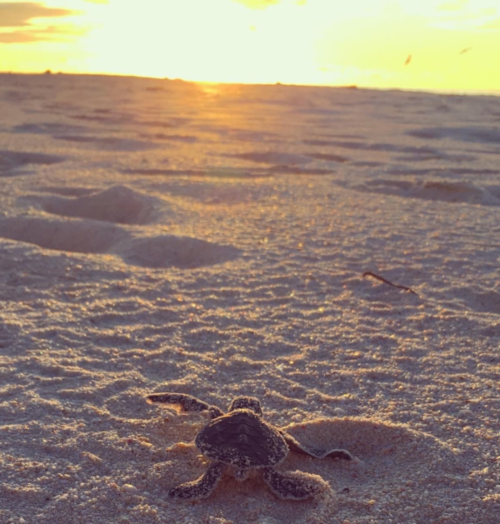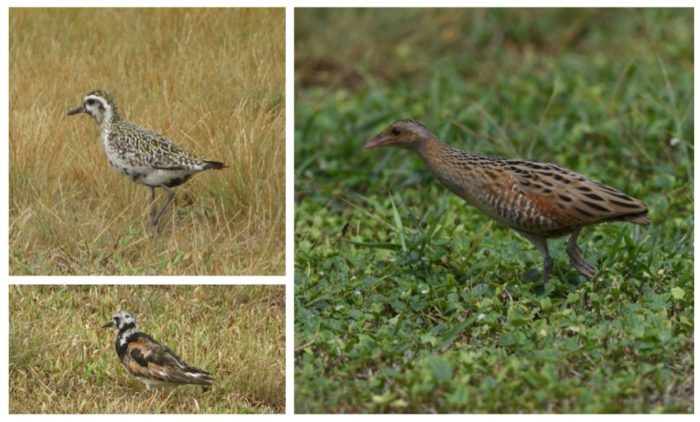Newsletter December 2019 (Part 1)
Here comes ‘Sandy Clause’, here comes ‘Sandy Clause’…
That’s right. Christmas is upon us once more. It feels like 11 months have come and gone in a flash. It’s been a year full of activism across the globe where it concerns climate change. On our Seychelles islands, there has been a positive movement against single use plastics; and many businesses are looking at bringing a healthy change towards how we consume and consequently impact our environment.
Here on Bird Island, our support for this can be seen through our concept of living simply. We continue with our happy and slow island life 🙂 welcoming visitors to experience our way of living and our ongoing conservation work.
After an amazing year having Conservation Officer, Joana Soares, helping us out, she bid us farewell in September to pursue a Masters Degree in Oceanography in the Portuguese islands of the Azores. We wish her well and thank her for her tireless efforts in patrolling the beaches during the turtle nesting season and for entertaining and educating so many of our clients on the island tours. The role has been taken over by the ‘other’ Joanna, wife of Nicholas Savy the General Manager. She is very lucky to have had help on the beaches from Bea Barclay, a budding naturalist, and friend of Bird Island, whose parents first visited the island twenty five years ago on their honeymoon!
So what else has been happening on our little island? We’ll leave you to find out. Happy reading!
Green & Hawksbill Turtles

We have seen over the years that Green Turtle nesting can vary quite considerably from season to season. Just this year, for the period between 14th August and 21st October only 24 nests were recorded compared to the 62 nests recorded over the same period last year. Although these numbers don’t look great, this is not enough information to determine whether this Green Turtle season is doing poorly on the whole. It is only when we will have analysed all the data recorded that we’ll see how the overall number is affected compared to last year.
The Green Turtles have most certainly given way to the Hawksbill Turtles in the last month though. The first Hawksbill nest this year was recorded on the 11th September, a bit earlier than last year which was on 22nd September. It was a bit stop start after that but since the beginning of November things have ramped up a lot with multiple emergences and nests on a daily basis. For the period between 9th September and 7th November 2018 we recorded 32 Hawksbill nests but for the same period this season we have already recorded 40 nests.
Bird Sightings

Interesting feathery friends visiting us at the moment include :
– 1 Corncrake Crex Crex (V)
– 1 Common Greenshank Tringa nebularia (A)
– 2 Grey Herons Ardea cinerea (B)
– 2 Pacific (or Asian) Golden Plovers Pluvialis fulva (A)
– 1 Common Swift Apus apus (V)
– 2 Barn Swallows Hirundo rustica (A)
– 1 Tree Pipit Anthus trivialis (A)
– 1 Yellow Wagtail Motacilla flava (V)
V=Vagrant A=Annual B=Breeds
We’re also seeing our usual visitors such as the Ruddy Turnstones (many of which had retained some of their breeding plumage earlier on), Curlew Sandpipers, Whimbrels, Grey Plovers, Crab Plovers and Saunders Terns. Click below for an interesting recount by Chris Feare of when the birds began arriving in September.
‘September on Bird Island: Magrant arrival in full swing’
Those Red-footed Boobies
In our last newsletter, we mentioned that a large number of Red-footed boobies had arrived on the island. At one point, a count had revealed that there were about 500 of them! Much more than the norm. Over 200 Red-footed boobies now remain and are a joy to watch as they head off to sea in formation every morning, between 6 am and 7 am, returning to roost around sunset. They continue to displace and annoy the Frigatebirds who now have to share their favourite roosting Casuarina Trees at the northern end of the island but their presence is a welcome addition for many of our visiting birdwatchers.
The One and Only Great Cormorant
Our friend is still around and looking good. It ferries up and down the reef’s lagoon fishing during the day time and is constantly chased by Noddies whenever it takes flight, as are the Herons. It seems that the Noddies are particularly territorial of their little island!
December 16, 2019 12:00 am